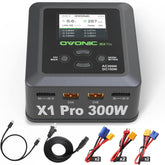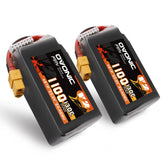LiPo Battery Maintenance
Required Certifications for LiPo Batteries
-
UN38.3 – Mandatory for safe transport of lithium batteries (air/land/sea).
-
IEC 62133-2 – International safety standard for portable sealed cells.
-
UL 2054 – U.S. safety certification for battery packs (ensures fire/electrical hazard compliance).
LiPo Battery Maintenance
Before Charging
-
Inspect for Damage
-
Look for swelling, leaks, or torn wires. Discard immediately if damage is found.
-
-
Check Voltage
-
Minimum safe voltage: 3.0V per cell (never charge if below this).
-
Storage voltage: 3.7–3.85V per cell.
-
-
Use a LiPo-Specific Charger
-
Never use NiMH/NiCd chargers—LiPo requires precise voltage control (4.2V max per cell).
-
Charging Best Practices
-
Charge Rate
-
1C recommended (e.g., 5A for a 5000mAh battery).
-
Emergency fast charging at 2C is possible but degrades lifespan.
-
-
Balance Charge
-
Ensures all cells charge evenly (critical for packs with 2+ cells).
-
-
Temperature Monitoring
-
Safe range: Below 45°C (113°F). Stop if hot to the touch.
-
-
Never Leave Unattended
-
Charge in a fireproof container (LiPo bags or metal ammo cans).
-
Storage Tips
-
Voltage Maintenance
-
Long-term storage: 3.7–3.85V per cell (prevents degradation).
-
-
Environment
-
Fireproof bag + room temperature (20–25°C / 68–77°F ideal).
-
Humidity should be <50% to avoid corrosion.
-
-
Avoid Extremes
-
Never store below 0°C (32°F) or above 60°C (140°F).
-
Discharging & Usage
-
Voltage Limits
-
Under load: Never discharge below 3.0V per cell.
-
Resting voltage: Should recover to ≥3.3V after use.
-
-
Cool-Down Period
-
Allow 10–15 minutes between high-load sessions (e.g., drones, RC cars).
-
-
Post-Use Recharge
-
If deeply discharged, recharge within 2 hours to prevent cell damage.
-
LiPo Battery Safety: Do's & Don'ts
Do's
-
Use a LiPo-safe bag for storage.
-
Dispose of damaged batteries (swollen, leaking, or >60°C).
-
Store terminals taped to prevent short circuits.
Don'ts
-
Never puncture, crush, or bend LiPos (risk of thermal runaway).
- Never charge the battery in a Lipo safe bag, as it poses an explosion risk..
-
Avoid over-discharging (<3.0V per cell causes irreversible damage).
-
No direct sunlight or hot surfaces (e.g., car dashboards).
Disposal Guide
-
Fully Discharge to 0V
-
Use a LiPo discharger or a saltwater bath (5% salt solution, 24–48 hours).
-
-
Terminal Protection
-
Tape ends before disposal to prevent sparks.
-
-
Recycle Properly
-
Take to e-waste centers (never trash or incinerate).
-
Troubleshooting Common Issues
| Issue | Cause | Solution |
|---|---|---|
| Swelling | Overcharge/Deep discharge | Dispose immediately—DO NOT USE! |
| Reduced Runtime | Aging cells/Unbalanced charging | Balance charge or replace battery. |
| Overheating | High C-rating/Poor ventilation | Reduce load, add cooling, or upgrade. |
| No Power | Over-discharged (<2.5V per cell) | Likely unrecoverable—replace. |
Advanced Tips for Longevity
-
Cycle Batteries Every 10–15 Charges
-
Discharge to 3.7V, then recharge to recalibrate cells.
-
-
Label Purchase Dates
-
Typical lifespan: 300–500 cycles (or 2–3 years with proper care).
-
-
Match Batteries to Load
-
Use a C-rating appropriate for your device (e.g., 50C for high-drain RC models).
-
Emergency Response
-
Fire Protocol
-
Use a Class D fire extinguisher (for lithium fires) or sand. Water is ineffective!
-
-
Leaking Battery
-
Place in saltwater, then dispose. Avoid skin contact with electrolyte.
-
LiPo Battery Resources & Support
Download Manuals & Firmware
For product instructions, firmware updates, and compatibility guides, visit:
🔗 Download Center
Comprehensive Battery Safety
Learn more about safe handling, certifications, and emergency protocols:
🔗 OVONIC Battery Safety Hub
Why These Resources Matter
-
Manuals/Firmware
-
Ensure optimal performance with the latest software.
-
Troubleshoot installation or charging issues.
-
-
Safety Guides
-
Detailed protocols for storage, transport, and disposal.
-
Regulatory compliance (UN38.3, UL 2054, etc.).
-







